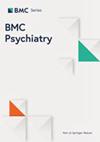摘要
背景:精神运动性激越患者的主要特征包括坐立不安、过度运动、易激惹以及对内外刺激的反应性增高。本综述评估了药物干预对出现精神运动性激越的 18 岁或以上精神障碍患者的疗效和安全性。我们进行了全面的文献检索,以确定符合本研究纳入标准的综述。然而,我们没有发现任何综述专门研究了药物干预对出现行为和心理症状(如情绪不稳、注意力下降、认知和行为改变)的躁动精神病患者的疗效和安全性。主要目的是评估药物干预在短时间内(以小时而不是以天计算)控制患者的有效性。研究重点是针对急诊环境下(无论是在综合医院还是在精神病院)的治疗,重点是控制急性精神运动性躁动,而不是长期维持治疗:在 PubMed、Scopus、EMBASE、Web of Science 和 COCHRANE Central 数据库等多个数据库中对评估精神病住院患者和急诊科患者精神运动性躁动药物治疗有效性和安全性的荟萃分析和系统综述进行了全面的文献检索。所纳入的综述包括纳入随机对照试验(RCT)或非随机对照试验(NRCT)的综述,这些综述比较了药物干预对躁动精神病患者(同时伴有心理和行为症状)的疗效和安全性:洛沙平(10 毫克)在 120 分钟内减轻躁动的疗效优于 5 毫克,吸入制剂可迅速缓解急性精神病患者的躁动。与奥氮平相比,阿立哌唑有效且引起的镇静较少,尽管氟哌啶醇所需的额外剂量较少,但在 60 分钟内的疗效较差。与氟哌啶醇相比,肌肉注射齐拉西酮起效更快,耐受性更好。事实证明,劳拉西泮比抗精神病药物更有效,副作用更小,而且在与抗精神病药物联合使用时疗效更佳。咪达唑仑可提供快速镇静,但会带来严重副作用的风险,尤其是对老年人而言。屈培利多与奥氮平一样有效,但镇静效果更快。氟哌啶醇与异丙嗪等联合疗法可有效减少攻击行为,且不良反应发生率较低:本综述全面概述了精神病患者精神运动性躁动的药物治疗。综述研究中最常用的药物包括氟哌啶醇、奥氮平和劳拉西泮。研究结果凸显了因人而异的治疗方法的重要性,以及进一步研究完善精神运动性躁动治疗的必要性。Background: The main characteristics present in patients with psychomotor agitation include restlessness, excessive motor activity, irritability, and heightened responsiveness to internal and external stimuli. This umbrella review evaluates the efficacy and safety of pharmacological interventions for patients with psychiatric disorders presenting psychomotor agitation, aged 18 years or older. A comprehensive literature search was conducted to identify umbrella reviews that met our study's inclusion criteria. However, no reviews were found that specifically investigated the efficacy and safety of pharmacological interventions for agitated psychiatric patients presenting with both behavioral and psychological symptoms, such as emotional lability, decreased attention span, and cognitive and behavioral alterations. The primary objective is to assess the effectiveness of pharmacological interventions in controlling patients within a short time frame, measured in hours rather than days. The focus was placed on studies addressing treatment in emergency settings, whether in general hospitals or psychiatric facilities, with an emphasis on managing acute psychomotor agitation rather than long-term maintenance treatment.
Method: A comprehensive literature search for meta-analyses and systematic reviews assessing the efficacy and safety of pharmacological treatment for psychomotor agitation in psychiatric inpatients and emergency department patients was conducted across various databases such as PubMed, Scopus, EMBASE, Web of Science and COCHRANE Central database. Included reviews comprised those that incorporated randomized controlled trials (RCTs) or non-randomized controlled trials (NRCTs) comparing the efficacy and safety of pharmacological interventions for agitated psychiatric patients (with both psychological and behavioral symptoms).
Results: Loxapine (10 mg) demonstrated superior efficacy over 5 mg in reducing agitation within 120 min, with inhaled formulations providing rapid relief in patients with acute psychosis. Aripiprazole was effective and caused less sedation compared to Olanzapine, although Haloperidol required fewer additional doses but was less effective at 60 min. Ziprasidone, administered intramuscularly, offered a faster onset and was better tolerated than Haloperidol. Lorazepam proved effective with fewer side effects than antipsychotics and showed enhanced efficacy when combined with them. Midazolam provided rapid sedation but posed risks of severe side effects, especially in older adults. Droperidol was as effective as Olanzapine but provided faster sedation. Combination therapy, such as Haloperidol with Promethazine, effectively reduced aggression with a lower incidence of adverse effects.
Conclusion: This umbrella review offers a comprehensive overview of the pharmacological management of psychomotor agitation in patients with psychiatric disorders. Among the most frequently used medications in the reviewed studies were haloperidol, olanzapine, and lorazepam. The findings underscore the importance of tailored treatment approaches and the need for further research to refine the management of psychomotor agitation in psychiatric settings.

 求助内容:
求助内容: 应助结果提醒方式:
应助结果提醒方式:


